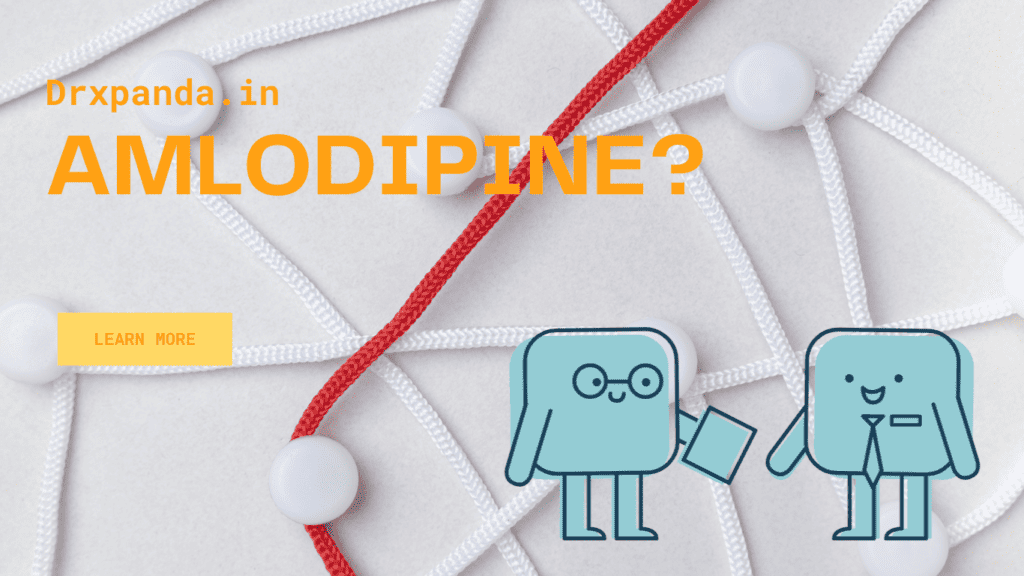
Your doctor may have prescribed an Amlodipine tablet if you suffer from high blood pressure, chest pain, or other heart-related conditions. The calcium channel blocker amlodipine is used to treat hypertension, angina, and other cardiovascular conditions. It increases blood flow and decreases blood pressure by relaxing the blood vessels.
This article will thoroughly overview Amlodipine uses, adverse effects, interactions, and more.
Amlodipine (amlodipine 5 mg)?
A prescription tablet called amlodipine is used to treat hypertension, angina, and other heart-related problems. It is categorised with other medications as a calcium channel blocker. Amlodipine pill functions by relaxing blood vessels, which improves blood flow and lowers blood pressure.
How to Use Amlodipine Tablet
Patients commonly take one tablet of amlodipine once daily. It’s best to take it at the same time every day, with or without food. Treatment duration and dose will be based on the patient’s medical history and the ailment being treated. You must take your medication exactly :as directed by your doctor.
Can amlodipine 10 mg be taken twice a day ?
Ans. No, always take medicine as per your doctor’s advice. Never take any medicine own self.
Different dosages of amlodipine:
Amlodipine 2.5mg
Amlodipine 5mg
Amlodipine 10mg
Side Effects of Amlodipine Tablet
As with any medication, Amlodipine tablets can cause side effects. The most common side effects of Amlodipine include:
- Dizziness
- Headache
- Fatigue
- Nausea
- Stomach pain
- Flushing
These side effects are usually mild and go away on their own. However, if you experience any of the following side effects, you should contact your doctor immediately:
- Rapid or irregular heartbeat
- Severe dizziness or fainting
- Swelling of the ankles or feet
- Shortness of breath
- Jaundice (yellowing of the skin or eyes)
Mechanism of action of amlodipine
Amlodipine belongs to the class of drugs known as calcium channel blockers. Its primary mechanism of action is to unwind and dilate blood vessels, thereby facilitating blood flow and lowering blood pressure. Amlodipine targets calcium channels in the smooth muscle cells of blood vessels, preventing calcium ions from entering these cells. This decreases the quantity of calcium available to bind and activate the contractile proteins in the smooth muscle cells, which relaxes and dilates the blood vessels. Consequently, blood pressure is decreased, and blood flow to the heart and other organs is enhanced. Amlodipine is also effective in treating angina as a result of this action, which reduces the heart’s exertion and improves blood flow to the heart muscle.
Precautions and Interactions
It is imperative to advise your doctor of any allergies or preexisting medical issues before beginning treatment with Amlodipine tablets. Certain medical issues may make amlodipine unsafe; your doctor may need to adjust your dosage or watch your progress more closely.
Amlodipine tablets may interact with other medications, including:
- Other blood pressure medications
- Grapefruit or grapefruit juice
- Certain antibiotics and antifungal medications
- HIV medications
- St. John’s wort
It is important to inform your doctor of any medications or supplements you are taking before starting Amlodipine. Always take medicine as per your doctor’s advice. Never take any medicine own self.
Amlodipine tablet uses
If you’re searching for a comprehensive guide to the uses of Amlodipine tablets, you’ve found it! Amlodipine is a versatile medication that provides relief from a wide range of health problems. In this article, we will explore its many applications, adverse effects, and frequently asked questions to provide you with all the information you need. So, let’s get begun!
Amlodipine Tablet Uses: The Main Attraction
-
Hypertension: Keeping Your Blood Pressure in Check
- How Amlodipine Works
- Dosage and Administration
-
Angina: Reducing Chest Pain and Discomfort
- Stable Angina
- Variant Angina
- Amlodipine’s Role in Angina Management
-
Other Uses: Exploring Additional Applications
- Raynaud’s Phenomenon
- Migraine Prophylaxis
Understanding the Side Effects: Proceed with Caution
-
Common Side Effects: What You Might Encounter
- Edema
- Dizziness and Fatigue
- Gastrointestinal Issues
-
Rare Side Effects: Less Common, but Noteworthy
- Severe Allergic Reactions
- Liver Problems
- Gum Overgrowth
-
Drug Interactions: Mixing Medications with Care
- CYP3A4 Inhibitors
- Simvastatin and Other Statins
- Grapefruit and Grapefruit Juice
Conclusion
Amlodipine has proved to be a lifesaver for a great number of people, providing relief from hypertension, angina, and other conditions. Its unique combination of efficacy and tolerability has made it a favourite among both medical professionals and patients. Having read this article, you are now equipped to make the most of Amlodipine tablet applications. Consult your physician for individualised guidance to ensure the best possible outcome.
Tablets of amlodipine are commonly used to treat hypertension, angina, and other heart-related conditions. It is generally safe and effective when taken as prescribed, but it can cause adverse effects and interact with other medications. Before beginning Amlodipine, it is essential to inform your doctor of any preexisting medical conditions or medications you are currently taking. Immediately contact your doctor if you experience severe side effects.
Amlodipine FAQs: Answering Your Burning Questions
- What should I do if I miss a dose of Amlodipine?
- If you miss a dose of Amlodipine, take it as soon as you remember. If it is almost time for your next dose, skip the missed dose and continue with your regular dosing schedule.
- Can I take Amlodipine with grapefruit juice?
- No, grapefruit juice can interact with Amlodipine and increase the risk of side effects. It is best
What is the major side effect of amlodipine?
The most common side effect of amlodipine is dizziness, with headache and fatigue also being relatively common.
What is the main purpose of amlodipine?
The main purpose of amlodipine is to treat high blood pressure (hypertension) and chest pain (angina), both of which are related to heart conditions.
What should you avoid when taking amlodipine?
If you are taking amlodipine, you should not eat grapefruit or drink grapefruit juice. This is because grapefruit can mix with the drug and make side effects more likely. Also, you shouldn’t take any other drugs or supplements without first talking to your doctor because they might combine with amlodipine and change how well or how safe it is.
Why is amlodipine taken at night?
Amlodipine is sometimes taken at night because it may provide better control of blood pressure during the early morning hours when the risk of heart attacks and strokes is highest. However, it’s essential to follow the dosing schedule recommended by your healthcare provider and not to adjust it without consulting them first.
Can I take Amlodipine if I’m pregnant or breastfeeding?
It’s not recommended to take Amlodipine if you’re pregnant or breastfeeding without consulting your doctor first. The safety of Amlodipine during pregnancy and breastfeeding is unclear, and potential risks must be weighed against potential benefits.
How long does it take for Amlodipine to start working?
The onset of action for Amlodipine varies depending on the individual and the condition being treated. In general, it takes 2-4 hours for Amlodipine to start working in reducing blood pressure.
What should I do if I miss a dose of Amlodipine?
If you miss a dose of Amlodipine, take it as soon as you remember
Can I stop taking Amlodipine abruptly?
No, you should not stop taking Amlodipine abruptly as it can cause adverse effects.
Is Amlodipine safe for children?
The safety and effectiveness of Amlodipine in children under 6 years of age are unclear.
Are there any alternatives to Amlodipine?
Your doctor may prescribe different calcium channel blockers, ACE inhibitors, ARBs, or diuretics instead of Amlodipine based on your needs and medical history.
amlodipine 5 mg
amlodipine tablet uses in hindi
amlodipine tablet
amlodipine 5 mg tablet
